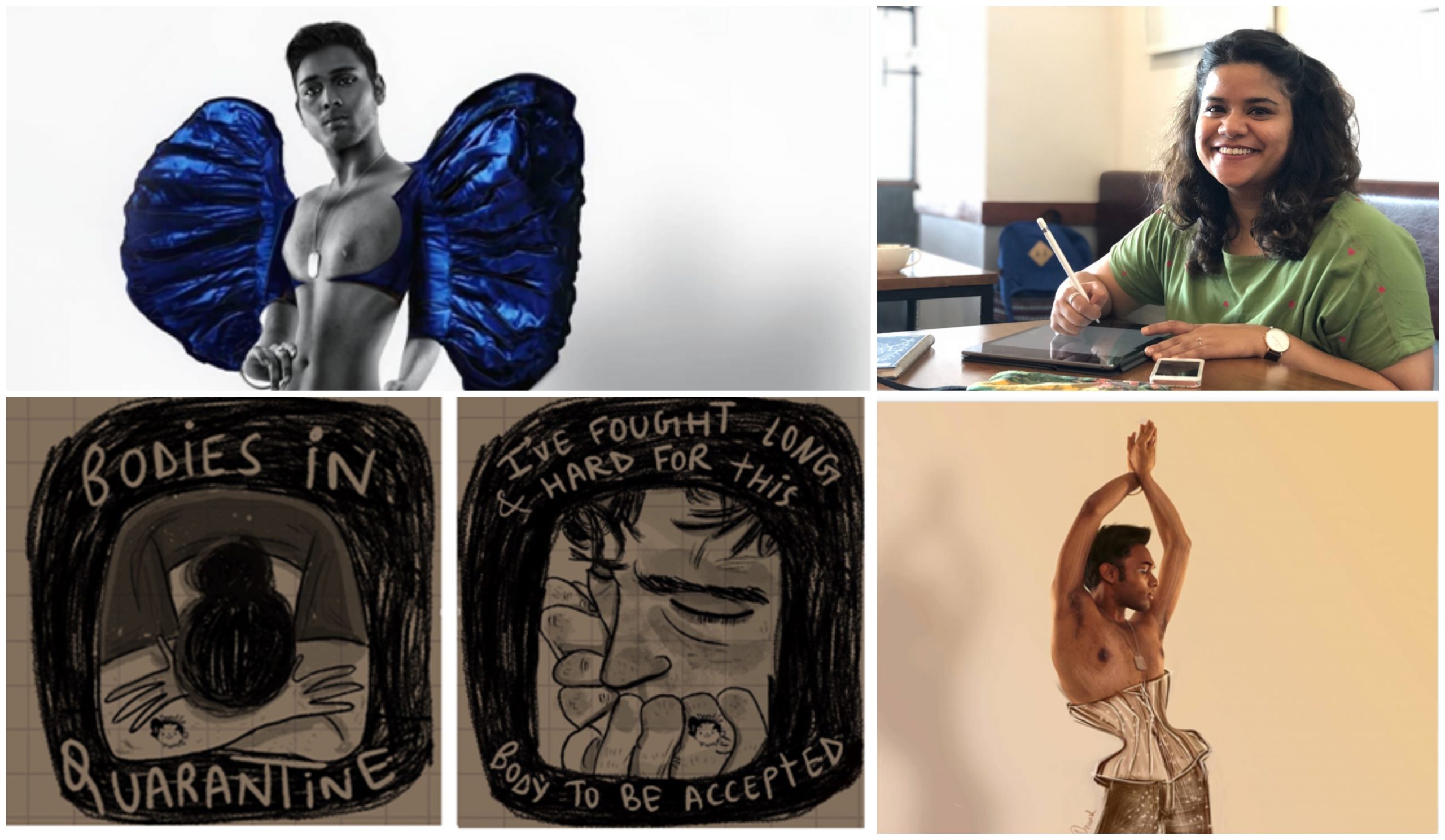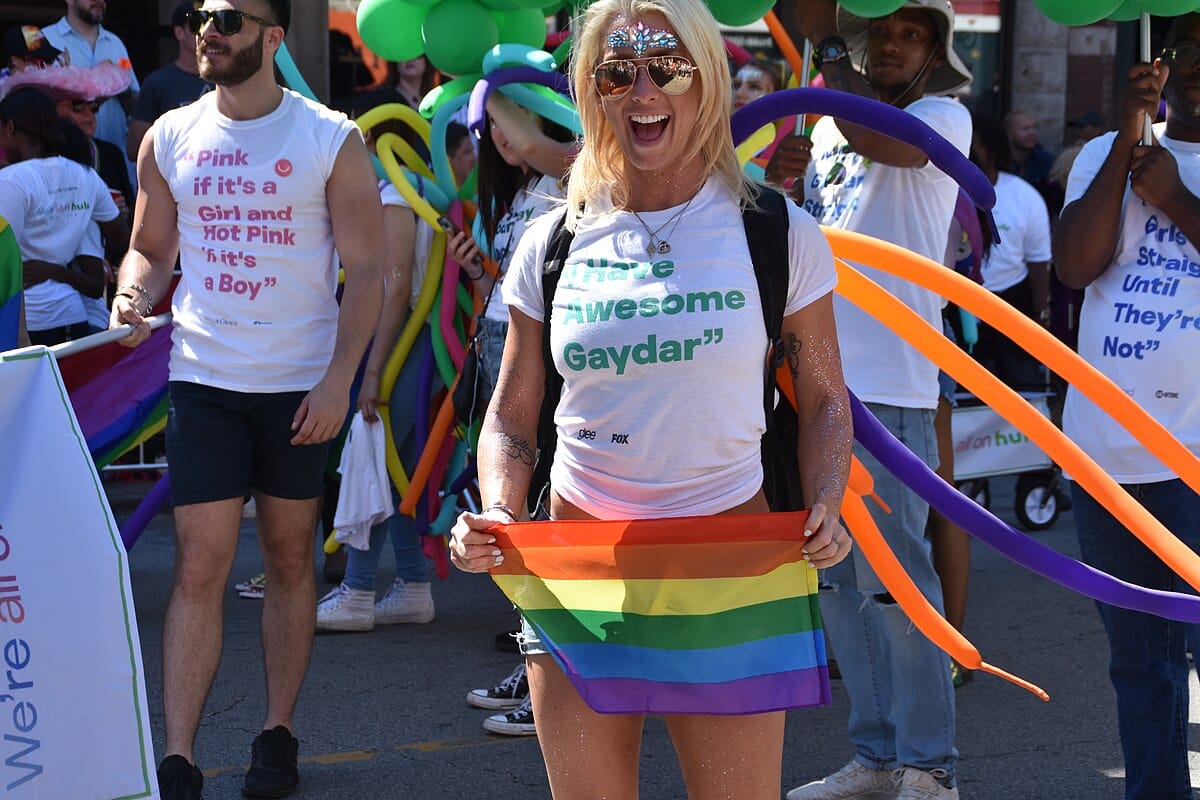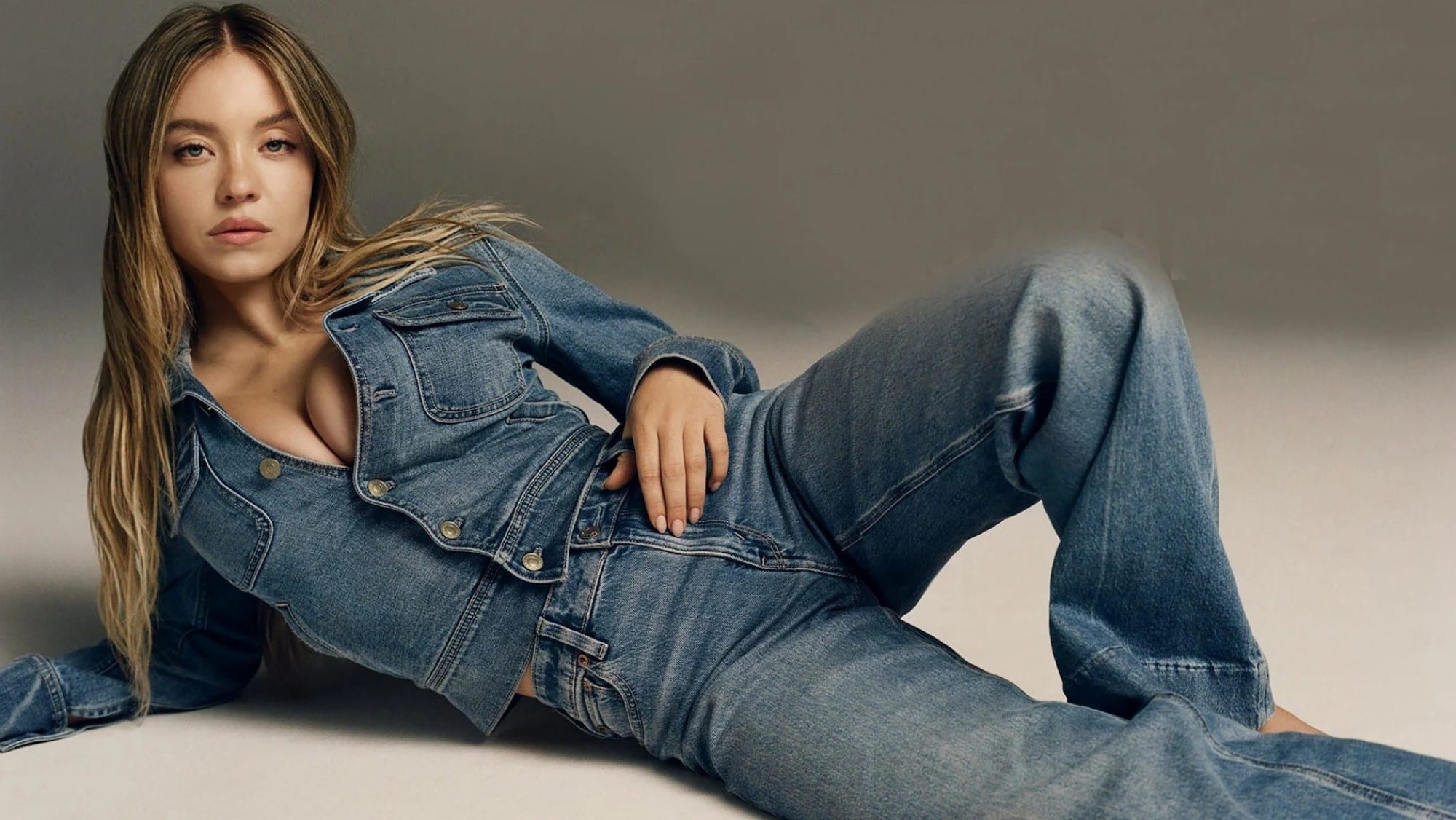Posted by Spatika Jayaram
In Conversation with Mounica Tata and Anwesh Sahoo
From addressing fat shaming, dark tones and body hair growth, to effeminate tendencies, and male body norms, these artists are worth looking out for in the deluge of content flooding online media platforms, where the need to “maintain” our appearances is extensively spoken of. Comic illustrator Mounica Tata, and artist and queer activist, Anwesh Sahoo, are using their creative content to address body image issues that people might experience through the lockdown.
Mounica Tata on Body Size, Bras and Fitness
Mounica Tata launched Doodleodrama as an online journal to improve representation for her body type in mainstream media. “I’ve always been an overweight person and bullied and shamed for the same. Only fairly recently I’ve learned to make my peace with my body. My own journey with my body inspired/continues to inspire me to talk about it.”
Her work addresses fat shaming, skin color and body hair growth, among other topics. After seeing fat bodies “either shamed and ridiculed or added in the narrative as a comic relief”, she chose to portray a broad spectrum of appearances through comics.
Citing artists like Trinetra Gummaraju, Kaviya Ilango and Sofie Hagen as her inspirations, Mounica brings out realistic content amidst platforms that perpetuate false ideals of body image. “The key is to find a balance and know that everything you see on the internet is curated and therefore not the whole truth. I think in times wherein our only window to the world is through our phones, it’s even more important to be cautious and conscious of what we’re letting in and how it’s impacting us.”
Her recent work entitled, Bodies in Quarantine, addresses the introspection that arrived with lockdown, focusing on how we “are hyper aware of the skin we live in”, and that quarantine acted as “the opportunity for us to get to know our bodies more intimately, to address the insecurities and start working towards acceptance.” Its rough sketches and black shades were used to “represent the mood and state of mind, just how unfinished and raw we feel within our bodies at the moment.”
Her recent work entitled, Bodies in Quarantine, addresses the introspection that arrived with lockdown, focusing on how we “are hyper aware of the skin we live in”, and that quarantine acted as “the opportunity for us to get to know our bodies more intimately, to address the insecurities and start working towards acceptance.” Its rough sketches and black shades were used to “represent the mood and state of mind, just how unfinished and raw we feel within our bodies at the moment.”
It also addresses the lack of social interaction in this time. “Now that we’ve removed the ‘social’ from the social construct of beauty and there’s no longer the validation, what do we even do with these bodies? We are programmed to dress up for others, to satisfy that gaze. When we take away all of this plus the validation, I am sure we feel alienated from our bodies. It impacts not only our bodies (physically) but also takes a toll on us mentally, triggering body dysphoria for many. The aim with creating that artwork was to open up a dialogue on this issue.”
As a body image artist fighting through feeds filled with “keeping fit”, Mounica’s take is honest as she speaks of the minimal representation of bulkier people and disabled bodies in the exercise domain. “Because of my journey with my body and the shame I’ve carried for so long, I do have a very unhealthy relationship with exercise. Also, I find it unsettling that I’ve only ever seen conventionally beautiful bodies promoting exercise and healthy living.”
Responding to the culture of bras, her comics address how 2020 saw many women abandon bras at home, and speak of a bra-less future with people finding alternate uses for this garment. “What is more important to shift our focus on is the objectification of breasts and the obsession with larger breasts. A lot of women don’t enjoy small and simple privileges like taking their bra off at home because they live in joint families or with elders and that’s sad. Freeing them breasts is such a liberating feeling!”
Stressing on pandemic related changes, “The Only Thigh Gap Worth Having” explores free relationships with our bodies and the changes they underwent. “My message has always been, you do you. Let people have agency over their own bodies and let them decide what they’d like to do with it!”
Anwesh Sahoo on Queer Representation and ‘Manning Up’
If you thought the corset was only used to confine women, Anwesh Sahoo’s latest illustration will surprise you. This piece portrays Anwesh embracing a narrow waistline as he dons this garment to break body image norms experienced by men. As the 2016 winner of the Mr. Gay World India title, Anwesh’s journey with body image began from the alienation and harassment he faced, for being gay and for displaying effeminate tendencies. He began running ‘The Effeminare’, an art-based Instagram page and blog, where he uses illustrations and photographs to reflect color positivity, thin physiques and for bringing out views on being homosexual.
Also read: Video: Dolls, Beauty Standards and Body Image Issues
“I wanted to eventually become a designer so I kept up with drawing. When I started getting better, I was able to get an internship so I saved some money, applied for Mr. Gay India and thankfully I won. I think with winning Mr. Gay India, there was a certain level of confidence imbibed in me.”
A Master’s student at NIFT, Delhi, he brings out art that reflects gay men of color to provide a voice for queer communities that face minimal representation in discussions revolving around body image. By portraying himself with heels, his series entitled Black Magic, addresses expectations of ‘manning up’ and gendered practices of living.
Speaking on conventional norms while representing India at the Mr. Gay World pageant, he says “I think you have to be thick skinned when you’re trying to represent your country at an international stage. Somewhere down the line all those body image issues had started getting to me. People have a very Siddharth Malhotra kind of image in their heads for an Indian boy.”
Although he comes from a system of beauty pageants, Anwesh chooses not to follow the culture of representing fitness ideals in his work. “I came from a system where I had to earn my beauty. I wasn’t a quintessential beauty pageant winner.”
A Master’s student at NIFT, Delhi, he brings out art that reflects gay men of color to provide a voice for queer communities that face minimal representation in discussions revolving around body image. By portraying himself with heels, his series entitled Black Magic, addresses expectations of ‘manning up’ and gendered practices of living.
The lockdown saw him create the ‘Melanin Series’ where he embraces dark skin tones and slim appearances in men, as he dons flared bottoms, skirts and even wings. In a time when many adolescents are restricted to their homes without the usual level of social interaction, he seeks to change the narrative that looks down upon effeminate, dark and gay men. To further this effort, he launched the ‘Fitting Out’ campaign in 2016, that reaches out to schools, curriculum boards and organizations to include gender studies in education systems, by participating with schools from various socio-cultural regions.
“I didn’t come from a place where we had great internet throughout our lives, so I really pushed myself to reach out to as many schools as possible. Popular schools with a lot of money still have access to this but what about the smaller schools where kids are still suffering? If we have been able to bring it to this level, then certainly we have been able to move forward.”
Also read: Loving Our Bodies Won’t Solve Body Image Issues. Here’s Why.
In a time where digital media faces a tremendous explosion in content, these artists’ roles are even pertinent than before. Their works showcase how subjective definitions of fitness, productivity and being worthwhile can be, as they bring refreshing perspectives in respecting and embracing our bodies for what they exist as naturally.
Spatika is an undergraduate student and INSPIRE Fellowship recipient, at the Indian Institute of Science Education and Research, in Mohali. Her interests range from the scientific end of neuroscience to the literary end of writing. She hopes to intersect the mechanisms of science into the creativity in art through her writing. You can find her on Instagram.
About the author(s)
Spatika is an undergraduate student and INSPIRE Fellowship recipient, at the Indian Institute of Science Education and Research, in Mohali. Her interests range from the scientific end of neuroscience to the literary end of writing. Her writings have been published or are forthcoming in Live Wire, Delhi Poetry Slam, The New Verse News, Sublunary Review and Brown Girl Magazine.




